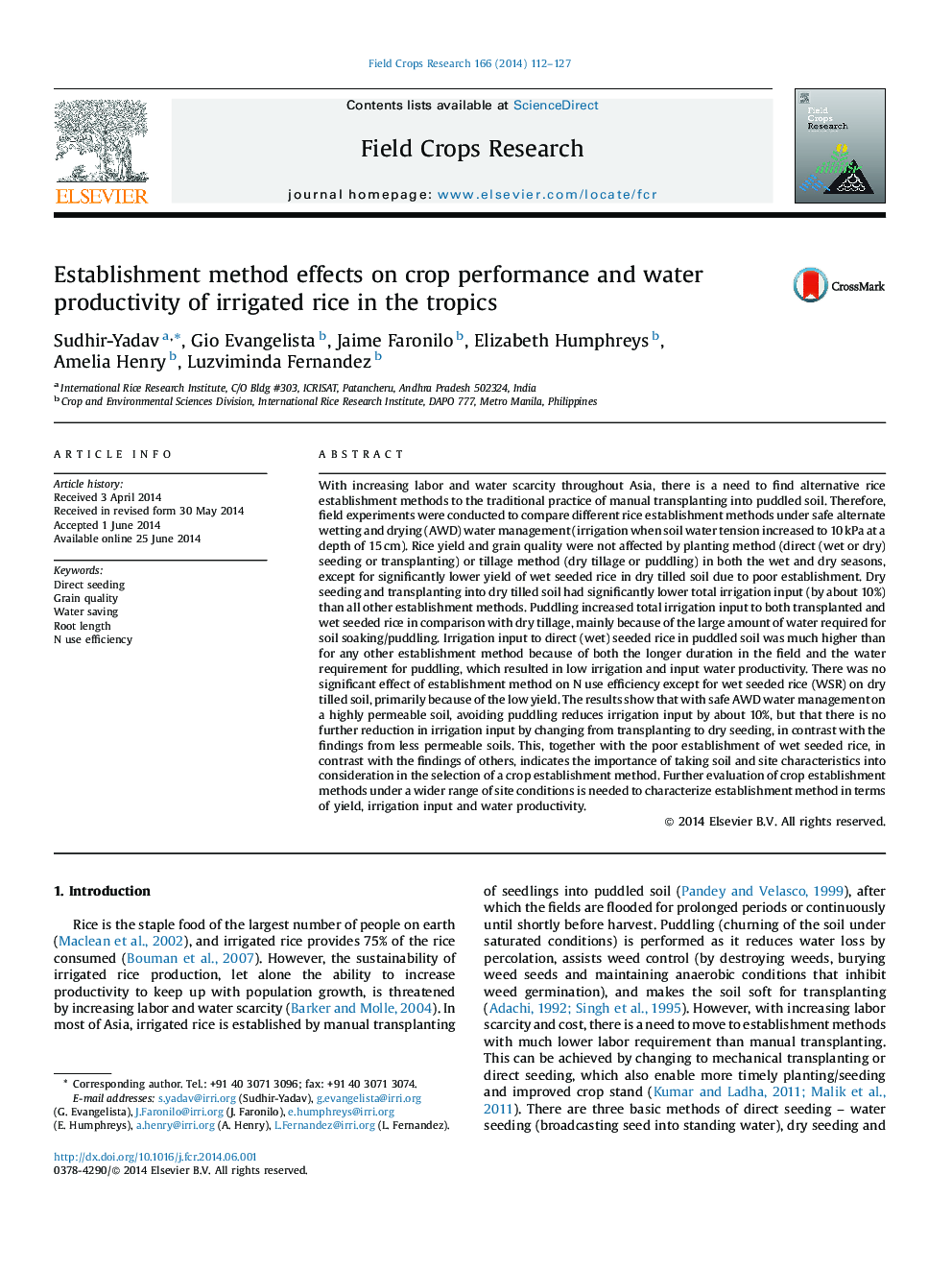| Article ID | Journal | Published Year | Pages | File Type |
|---|---|---|---|---|
| 4509997 | Field Crops Research | 2014 | 16 Pages |
•Rice yield was not affected by planting method (direct (wet or dry) seeding, transplanting) or tillage method (dry tillage, puddling) in either season (except for significantly lower yield of wet seeded rice in dry tilled soil due to poor establishment).•Dry seeding and transplanting into dry tilled soil had significantly lower total irrigation input than all other establishment methods – largely because of the large amount of water required for soil soaking/puddling.•Irrigation input to direct (wet) seeded rice in puddled soil was much higher than for any other establishment method because of both the water requirement for puddling and the longer duration in the field.•The poor establishment of wet seeded rice on a well-drained dry tilled soil, in contrast with the findings of others, indicates the importance of taking soil and site characteristics into consideration in the selection of crop establishment method.
With increasing labor and water scarcity throughout Asia, there is a need to find alternative rice establishment methods to the traditional practice of manual transplanting into puddled soil. Therefore, field experiments were conducted to compare different rice establishment methods under safe alternate wetting and drying (AWD) water management (irrigation when soil water tension increased to 10 kPa at a depth of 15 cm). Rice yield and grain quality were not affected by planting method (direct (wet or dry) seeding or transplanting) or tillage method (dry tillage or puddling) in both the wet and dry seasons, except for significantly lower yield of wet seeded rice in dry tilled soil due to poor establishment. Dry seeding and transplanting into dry tilled soil had significantly lower total irrigation input (by about 10%) than all other establishment methods. Puddling increased total irrigation input to both transplanted and wet seeded rice in comparison with dry tillage, mainly because of the large amount of water required for soil soaking/puddling. Irrigation input to direct (wet) seeded rice in puddled soil was much higher than for any other establishment method because of both the longer duration in the field and the water requirement for puddling, which resulted in low irrigation and input water productivity. There was no significant effect of establishment method on N use efficiency except for wet seeded rice (WSR) on dry tilled soil, primarily because of the low yield. The results show that with safe AWD water management on a highly permeable soil, avoiding puddling reduces irrigation input by about 10%, but that there is no further reduction in irrigation input by changing from transplanting to dry seeding, in contrast with the findings from less permeable soils. This, together with the poor establishment of wet seeded rice, in contrast with the findings of others, indicates the importance of taking soil and site characteristics into consideration in the selection of a crop establishment method. Further evaluation of crop establishment methods under a wider range of site conditions is needed to characterize establishment method in terms of yield, irrigation input and water productivity.
